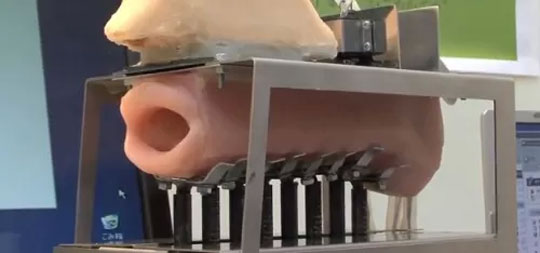
From putting out forest fires to grabbing you a cup of coffee, robots have the potential to be hugely beneficial to humans. The problem, however, is that they seem to fall apart when they’re injured. A new study published in Nature may have just overcome this hitch by creating a robot that learns to adapt to its injuries. What could possibly go wrong?
Researchers from Pierre and Marie Curie University and the University of Wyoming have created a robot that is able to get back on its feet—literally—after two of its legs were broken. They also developed a robotic arm that is able to place a ball into a can, despite having several broken motors.
“When injured, animals do not start learning from scratch,” senior author Jean-Baptiste Mouret said in a statement. “Instead, they have intuitions about different ways to behave. These intuitions allow them to intelligently select a few, different behaviors to try out and, after these tests, they choose one that works in spite of the injury.”
For example, if you hurt your ankle, you quickly try to find a way to overcome the injury by testing out new ways to walk. Using this principle, researchers created an algorithm called ‘Intelligent Trial and Error’ that makes a detailed map of the different behaviors the robot can perform and allows them to adapt to unexpected situations.
“Once damaged, the robot becomes like a scientist. It has prior expectations about different behaviors that might work, and begins testing them. However, these predictions come from the simulated, undamaged robot. It has to find out which of them work, not only in reality, but given the damage,” says lead author Antoine Cully in a statement.
“For example, if walking, mostly on its hind legs, does not work well, it will next try walking mostly on its front legs. What’s surprising is how quickly it can learn a new way to walk. It’s amazing to watch a robot go from crippled and flailing around to efficiently limping away in about two minutes,” he adds.
Intelligent Trial and Error undergoes two crucial steps; the first involves a new type of evolutionary algorithm called MAP-Elites to create a behavior-performance map. MAP-Elites depends on Darwin’s concept of ‘survival of the fittest’ to create competitions in computer simulations, which evolve artificially intelligent robots. In the second step, the robots uses its prior knowledge provided by the first step to adapt to specific damages.
Researchers hope this new technique can lead to the development of more ‘autonomous’ robots. To see the robots in action, watch the video below.
Via IFL Science






